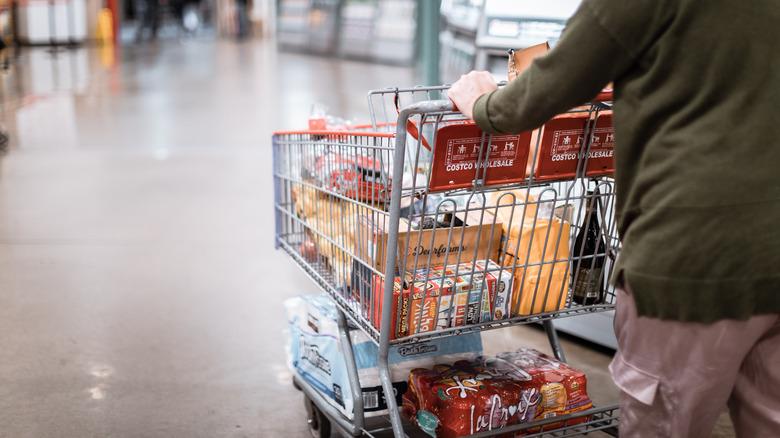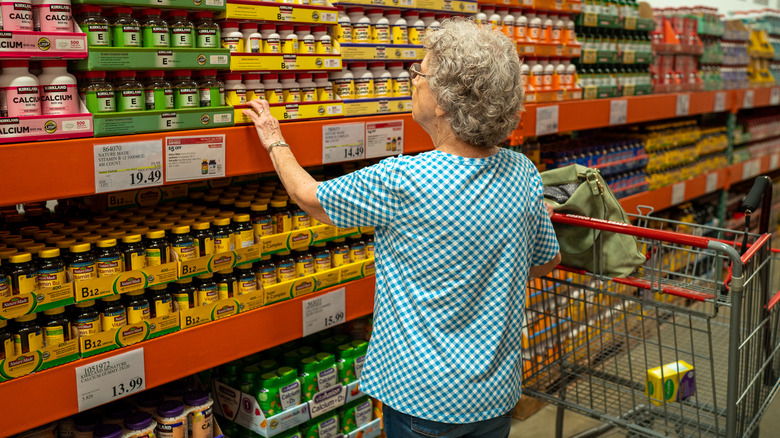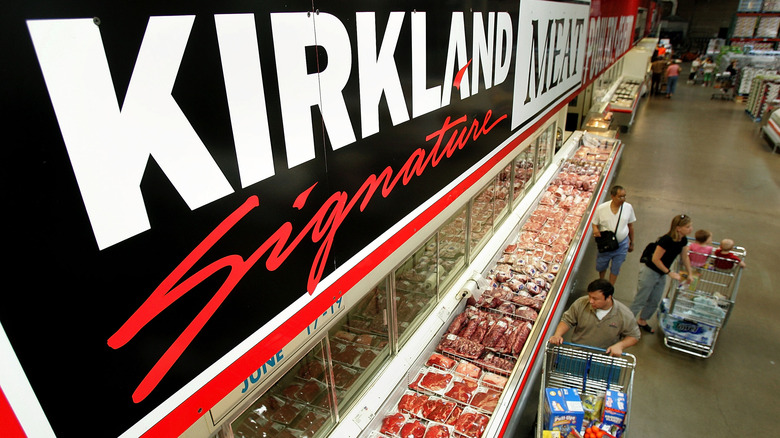The Failed In-House Brands Costco Tried Before Kirkland
What Costco has managed to achieve is truly incredible, and we're not just talking about keeping the price of its food court hot dogs at $1.50 over all these years. The warehouse superstore has built itself into one of the largest retailers in the world, with a huge portion of their success coming on the back of a single brand: its own. Costco's in-house label, Kirkland Signature, accounts for roughly a quarter of the warehouse giant's revenue, per CNN. Today, the Kirkland label outsells some of the biggest brands in food, including Coca-Cola and Kellogg's. But it wasn't always this way.
Strange as it may be to imagine now, Kirkland wasn't always a part of the Costco shopping experience. For the first decade that Costco was in business, it sold its in-house products under multiple different brand names. There was Clout detergent, Nutra Nuggets dog food, and Simply Soda, the latter of which came in multiple varieties, including a Coca-Cola knockoff in a strikingly similar white-on-red can as the name brand. By the early 1990's, Costco was operating 30 different in-house brands, but then it made a radical change to their business model that would turn out to be one of the smartest moves in the company's history.
The history of Costco's in-house brands
The very first Costco location opened in Seattle in 1983, and for the first decade that the company was in business, it was splitting its private label products under different in-house brand names, depending on the product type. Remember Chelsea toilet paper and Ballantrae wine? Probably not, but just because Costco's old in-house brands failed to stick around doesn't mean that this business model is necessarily a bad one. In fact, the same strategy is currently used by companies like Target, which has over 45 different in-house brands, each focused on a specific niche, like furniture, kid's clothing, and cookware.
The idea to consolidate all of Costco's in-house products under a single private label brand came from the company's co-founder and former CEO Jim Sinegal. The idea came to him, thanks to an article published in Forbes magazine in 1991. It covered the rising profitability of private label brands. Name brand prices were rising sharply at the time, and Sinegal reasoned that the demand for private label goods and their lower price points would only continue to grow. However, if Costco continued to operate on the model it had been using up to that point, expanding its selection of private label products would mean creating new in-house brands for each product category, and trademarking all those new brand names sounded like a legal headache.
The rise of Kirkland
In 1995, Costco switched from its old, multiple in-house brand model to the current business model, under which all in-house products carry the Kirkland Signature label. Sinegal originally wanted to use the band name "Seattle Signature," but Costco was unable to secure a trademark for that name (proving Sinegal's fears about legal troubles in the process). The company chose the name Kirkland as a nod to the Seattle suburb where its headquarters was located at the time. Costco has since moved its headquarters to the nearby town of Issaquah, but they stuck with the Kirkland label, which has now become globally-recognized.
Costco doesn't actually produce most of the products it sells under the Kirkland label. For the most part, the products come from name brand companies that have deals with the retail giant. For example, Kirkland canned tuna is made by Bumble Bee, and Duracell, Starbucks, and Ocean Spray all have reported ties to the brand. According to NBC, Kirkland now carries over 500 products, ranging from grocery to apparel to toiletries and beyond. As long as name-brand goods continue to cost so much more (with the exception of the dollar store), Kirkland looks poised to keep expanding ever on.


